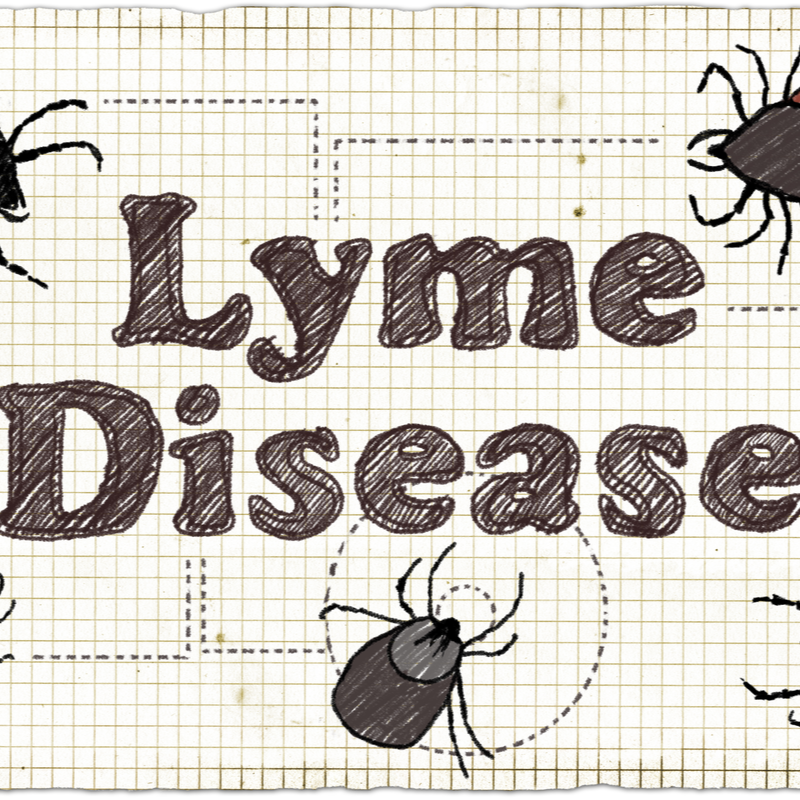
What is the Bartonella borreliosis pathogen?
The Bartonella borreliosis pathogen is a bacterium that is transmitted by ticks . An infection can lead to variously severe courses of disease and affect the skin, but also the nervous system, the heart and the joints. Not every tick bite necessarily leads to an infection. In Germany only about one in 100 tick bites leads to illness. The earlier the tick is removed, the lower the risk of infection . After the tick has sucked for longer than twelve hours the risk of infection increases.
Which groups of people are particularly at risk and how can you protect yourself from a Bartonella borreliosis infection?
At risk are above all those people who are often bitten by ticks. Ticks are especially common in the garden and in the forest and stay here on blades of grass, in the undergrowth, but also on bush branches. From here, they can come into contact with human skin and also penetrate into other parts of the body. However, domestic animals and wild animals that spend time outdoors can also pass ticks on to humans .
What are the symptoms of a Bartonella borreliosis infection?
The majority of all Bartonella borreliosis infections are asymptomatic . If symptoms do occur, they can be very different and occur either one after the other or at the same time . This means that it is not always easy to diagnose the disease. A typical sign of the disease, however, is the so-called migratory redness (erythema migrans), which occurs in about 90 percent of all cases of the disease. This is a reddening of the skin at least 5 cm in size, which forms a ring around the site of the bite after three to 30 days after the tick bite. Over several days, the reddening of the skin slowly spreads outwards, whereby the centre is usually paler than the edge. However, the redness does not always have to occur at the injection site, but can also develop on other parts of the body, such as the legs, the head or the neck. It is important to have the redness examined and treated by a doctor .
In addition to the migratory redness, fever, swelling of the lymph nodes and muscle and joint pain are also possible in the further course of the disease. More rarely and mostly in children, nodular or blue-red skin swellings can also develop. These occur particularly often on the nipples, on the ears and/or in the genital area. Chronic skin inflammation (Acrodermatitis chronica atrophicans) only occurs in isolated cases. In this case, the skin changes on the inside of the arms, legs, the fingers or toes and, as the disease progresses, takes on a bluish colour and becomes paper-thin.
In about three out of 100 people, a Bartonella borreliosis infection can affect the nervous system. The first symptoms set in a few weeks or months after the tick bite and are manifested as follows:
- burning nerve pain, which increases in intensity, especially at night,
- facial paralysis on one or both sides,
- inflammatory nerve irritations, which can lead to feelings of numbness, visual or hearing disorders, more rarely also to paralysis of the trunk, arms and/or legs .
It can also happen more rarely that the heart is affected by the infection, resulting in inflammation and/or arrhythmia.
How is a Bartonella borreliosis infection diagnosed?
If a wandering redness is present, the Bartonella borreliosis infection can be diagnosed by a physical examination. If, on the other hand, other symptoms point to a Bartonella borreliosis infection , a blood test is carried out for clarification.
How is a Bartonella borreliosis infection treated?
A Bartonella borreliosis infection is usually treated with antibiotics . If the treatment starts at an early stage of the disease , the chances of a quick and complete recovery are good and can protect against severe courses of the disease.
How can you protect yourself against a Bartonella borreliosis infection?
To protect yourself effectively against a Bartonella borreliosis infection, you should avoid tick bites. To do this, you should pay attention to the following :
- If you are in the forest or in a meadow, long-sleeved shirts, long trousers and closed shoes should be worn.
- Before going outdoors, you can also apply tick repellent. To guarantee the best possible protection, however, the manufacturer's instructions should be followed . Please note that the product neither offers complete protection nor is it effective for an unlimited period of time.
- Ticks are easier to spot and remove on light-coloured clothing than on dark-coloured clothing.
If, despite all precautions, you are bitten by a tick
, it is important to remove it as soon as possible to minimise the risk of a Bartonella borreliosis infection.
In any case, the body
should be thoroughly searched for ticks.
Ticks particularly like warm, soft areas of skin such as the back of the knees,
the groin, the armpits or the area behind the ears, as well as the
head and hairline.
How do you remove ticks?
- The tick should be grabbed by its head area, if possible, close to the skin, . Pull the tick slowly and straight out. Use tweezers or a special tick card for this.
- Ticks should not be treated with creams or oils. You should also not squash them, as this can release even more pathogens .
- The site of the bite should be carefully disinfected after removing the tick.
- In some cases, remnants of the tick may remain, which can easily inflame the skin. Note that this does not increase the risk of Bartonella borreliosis infection.
